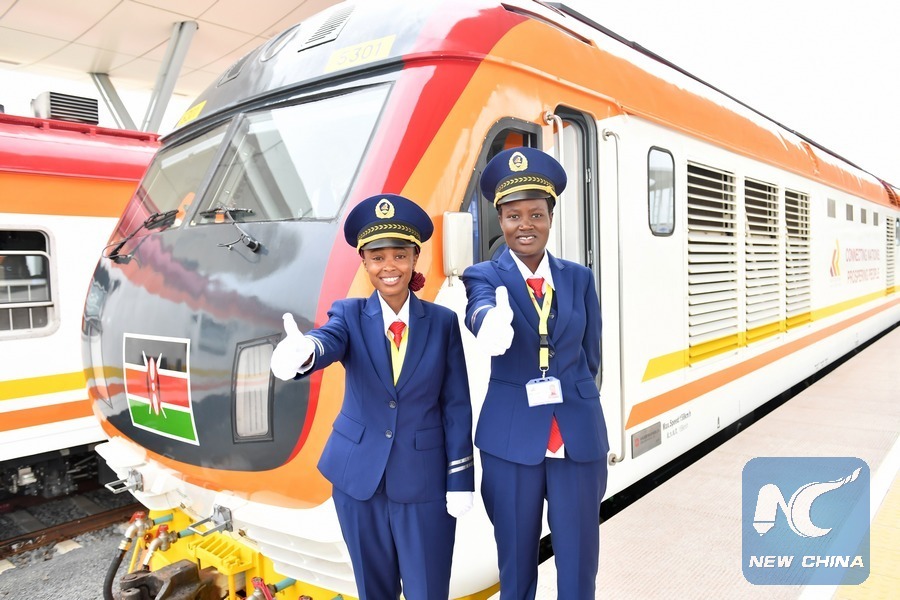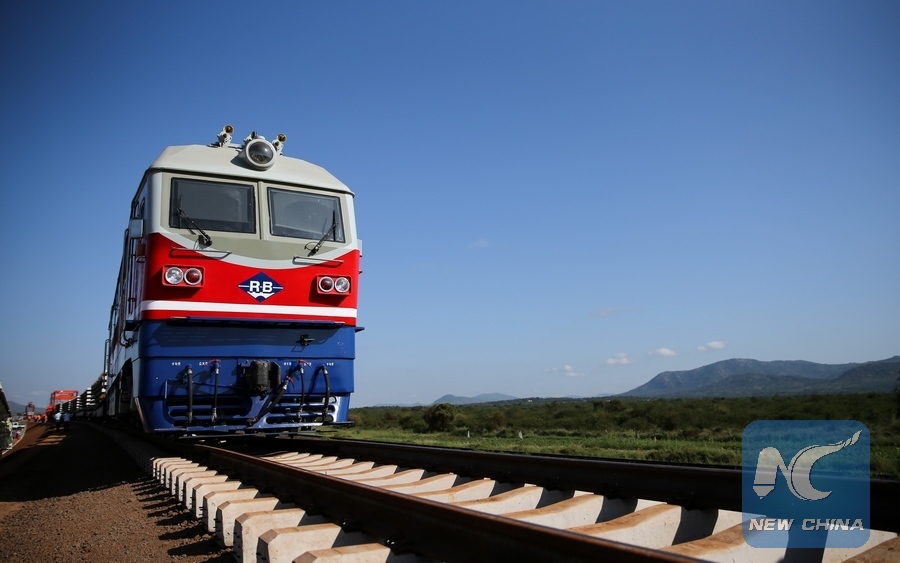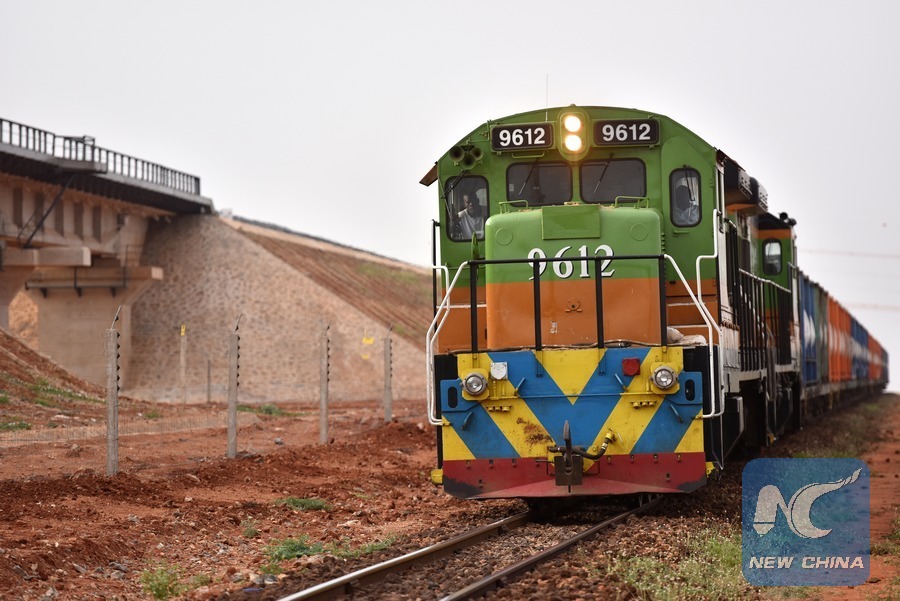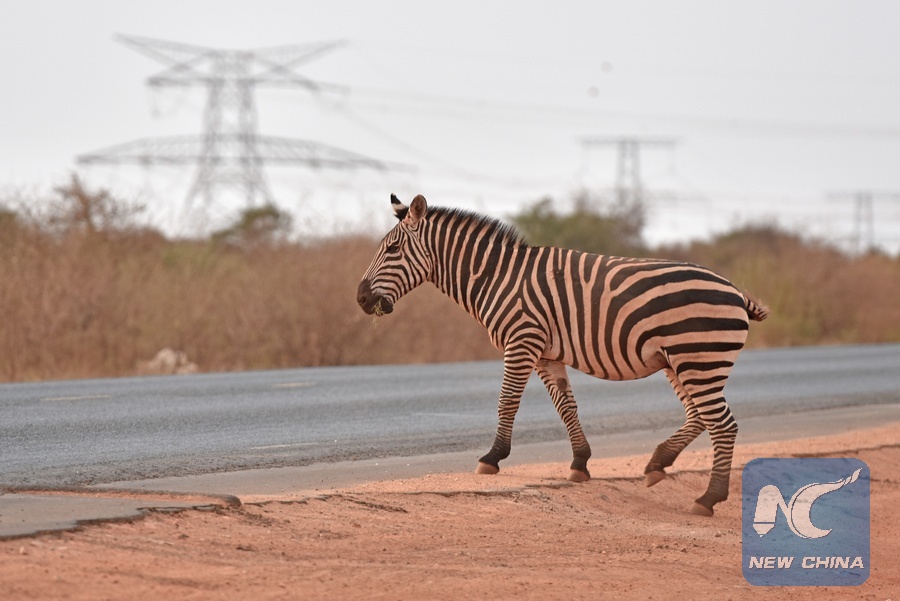
Two female engine drivers gesture before the operations of the Standard Gauge Railway (SGR) in Mombasa, Kenya, on May 31, 2017. (Xinhua/Sun Ruibo)
NAIROBI, May 31 (Xinhua) -- Kenya began operations on the Chinese-built Standard Gauge Railway (SGR) Wednesday in a drive to revolutionize its transportation sector and speed up industrialization. Xinhua offers eight sets of figures on what the railway is:
1. The 480-km SGR stretches from the port of Mombasa to Kenya's capital Nairobi, involving a total investment of 3.8 billion U.S. dollars, which makes it Kenya's largest infrastructure project since its independence.

A locomotive is seen at a construction site of the Standard Gauge Railway (SGR) project, near Sultan Halmud, Kenya, on May 28, 2016. (Xinhua/Pan Siwei)
2. Construction of the railway began in December 2014 with China Road and Bridge Corporation (CRBC) being the contractor.
3. The designed speeds for passenger trains on the SGR line are 120 km/h and 80 km/h for freight trains.
4. The SGR line runs largely in parallel with the Nairobi-Mombasa sections of the meter-gauge railway built between 1986 and 1901 during the colonial era.

A cargo train runs on the century-old meter gauge railway near Voi, Kenya, on Feb. 22. (Xinhua/Sun Ruibo)
5. The Kenyan government has anticipated the SGR to boost Kenya's GDP by 1.5 percentage points annually, promote industrialization and bring in investment along the route by reducing the cost of transportation.
6. The Mombasa-Nairobi SGR is the first step in the grand plan to build an East Africa railway network that will eventually link Kenya with Uganda, Rwanda, Burundi and South Sudan. An extension of the Nairobi-Mombasa line, the Nairobi-Naivasha SGR, has already begun construction.
7. About 120 km of the SGR run through Kenya's Tsavo National Park. The line features 14 wildlife channels to facilitate migration of wildlife in the areas.

A zebra walks after passing through an animal passage of the SGR tries to pass the A109 highway near Voi, Kenya, Feb. 22, 2017. Kenya's Tsavo National Park is the oldest and largest wildlife sanctuary in the African country. (Xinhua/Sun Ruibo)
8. The SGR project has created more than 46,000 jobs for locals and the number of local workers who received training has hit 45,000.

